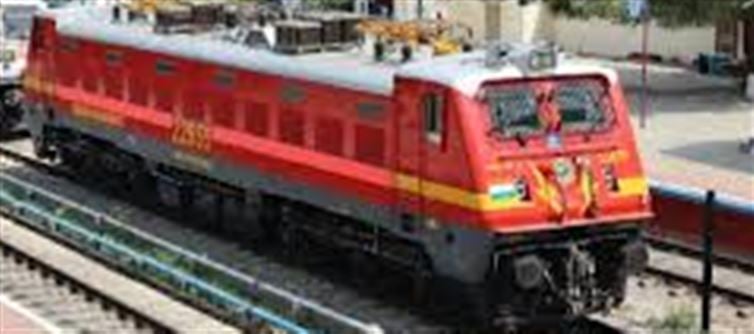
Uttar Pradesh (UP) is home to the largest railway network in India, with over 1,000 railway stations connecting the state to every corner of the country. As a key transit hub, UP's vast railway network plays a crucial role in not just transportation but also in driving economic growth, tourism, and accessibility for millions. Here’s a breakdown of why Uttar Pradesh’s railway connectivity stands out.
1. A Mega Network: 1,000+ Stations and Counting
Uttar Pradesh is a railway powerhouse, boasting more than 1,000 railway stations across its expanse. This is the largest number of stations of any state in India. The state’s vast network includes everything from bustling major stations to small village-level platforms, ensuring accessibility for both urban and rural populations.
2. Connecting Major Cities and Industrial Hubs
Uttar Pradesh’s railway network connects key cities like Lucknow, Kanpur, Varanasi, Agra, Allahabad (Prayagraj), and Meerut, which are not just cultural and political centers but also major economic and industrial hubs. For example:
· Kanpur: Known as the industrial capital of UP, kanpur is a major hub for leather and textile industries, with excellent rail connectivity.
· Agra: A global tourism hotspot due to the Taj Mahal, agra sees millions of visitors, and its railway connectivity ensures smooth travel for tourists.
· Varanasi: As a religious and cultural epicenter, varanasi is well-connected, facilitating pilgrimages and tourism.
3. Religious and Historical Hubs: Attracting Pilgrims
UP is home to several major religious sites that draw millions of pilgrims, and the railway network plays a pivotal role in their transportation. Some prominent examples include:
· Mathura: Birthplace of Lord Krishna, attracting millions of devotees each year.
· Ayodhya: The birthplace of Lord Ram, making it a key pilgrimage site.
· Allahabad (Prayagraj): Famous for the Kumbh Mela, the world’s largest religious gathering, attracting millions of visitors.
These religious destinations are well-connected by rail, ensuring smooth travel for devotees year-round.
4. Remote Villages: Bridging the Gap
One of the most crucial aspects of UP’s railway network is its ability to connect even the most remote villages with urban centers. Many smaller towns and rural regions in UP rely on railways as their primary means of transportation. This connectivity provides access to essential services, markets, and employment opportunities.
5. Key Railway Zones and Divisions in UP
Uttar Pradesh is serviced by several railway zones and divisions, which are responsible for the smooth operation and management of its extensive network. These include:
· Northern Railway Zone (NR): This zone has a significant presence in UP, covering many cities including lucknow, kanpur, and Varanasi.
· North Eastern Railway Zone (NER): Servicing cities like Gorakhpur and varanasi, this zone plays a major role in connecting UP with neighboring states.
· North Central Railway Zone (NCR): It covers regions like allahabad (Prayagraj), Jhansi, and agra, connecting key historical and industrial cities.
6. Infrastructure and Modernization Efforts
While UP already boasts a vast railway network, efforts to modernize and upgrade railway infrastructure are ongoing. Projects such as:
· Dedicated Freight Corridors: To improve logistics and reduce congestion.
· Electrification: The push to electrify the entire railway network in UP is underway, reducing dependence on fossil fuels and improving environmental sustainability.
· High-Speed rail Projects: The Kanpur-Agra Expressway and other high-speed rail routes aim to cut travel times significantly between major cities.
7. Economic Impact: Boosting Trade and Employment
The vast railway system in UP plays a central role in the state's economic landscape. By connecting industrial zones with markets across India, the rail network aids in the efficient transportation of goods, be it agricultural produce, manufacturing items, or industrial raw materials. Furthermore, the railway sector provides employment to millions, from station staff to train operators.
8. Tourism Potential: Beyond the Major Cities
While cities like varanasi, agra, and lucknow are prominent tourist destinations, the railway network has opened up many lesser-known spots for travelers. From Chitrakoot to Dudhwa National Park, lesser-explored regions are now easily accessible by train, adding a new dimension to tourism in Uttar Pradesh.
9. Challenges and Future Prospects
With great connectivity comes the challenge of maintaining and upgrading infrastructure to meet the growing demand. However, the UP government, along with indian Railways, has been consistently focusing on:
· Expanding broad-gauge networks.
· Enhancing station facilities for better passenger experiences.
· Ensuring better safety measures and train punctuality.
In the coming years, we can expect to see even more modernizations, including smart stations, automatic ticketing systems, and faster trains, all contributing to the state’s development.
10. Conclusion: A Railway Powerhouse
With over 1,000 railway stations, Uttar Pradesh stands as the backbone of India’s rail connectivity. From religious pilgrimages to industrial transportation, this extensive network serves millions daily and is integral to the state’s economy, culture, and growth. As India’s railways continue to evolve, UP remains at the forefront of this transformation, offering greater access, opportunities, and connectivity for all.
Disclaimer:
The views and opinions expressed in this article are those of the author and do not necessarily reflect the official policy or position of any agency, organization, employer, or company. All information provided is for general informational purposes only. While every effort has been made to ensure accuracy, we make no representations or warranties of any kind, express or implied, about the completeness, reliability, or suitability of the information contained herein. Readers are advised to verify facts and seek professional advice where necessary. Any reliance placed on such information is strictly at the reader’s own risk..jpg)




 click and follow Indiaherald WhatsApp channel
click and follow Indiaherald WhatsApp channel